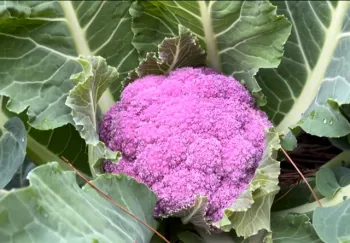
Cool-season vegetables usually yield higher food value per pound and per square foot of garden than warm-season vegetables. The edible parts of cool season plants are usually the vegetative parts, such as roots, stems, leaves, or immature flower parts, while warm season vegetables are harvested for the fruit such as tomatoes, peppers, and zucchini.
What to Plant?
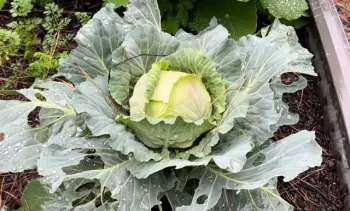
- roots: beet, carrot, parsnip, radish, turnip
- stems: asparagus, white potato
- leaves: cabbage, celery (fleshy petioles), lettuce, spinach
- immature flower parts: broccoli, cauliflower, globe artichoke
Bulbs such as onions and garlic can also be planted in fall but are usually harvested in late spring to summer.
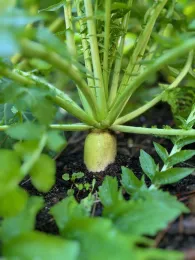
Most vegetables prefer full sun to part shade and grow best when average temperatures are between 55 o F and 75o F and most tolerate a light freeze. The labels on the 4-inch and six packs will help identify the amount of sun preferred, as well as how much water, planting distances, days to maturity and approximate yield. Follow planning instructions for best results.
I've planted, now what?
You've got plants in the ground, that's a great start. Now let's keep them growing. It is important to keep them well watered. Cool season vegetables don't produce the same deep root system that warm season vegetables tend to produce, and some are roots themselves so it's important to keep them properly watered. If you are growing root vegetables such as carrots, it isn't enough to keep the top few inches watered, you need to ensure water is getting to the root tip.
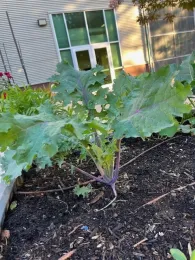
If you direct seed you may need to thin the plants for optimal growth. The package will tell you how far apart the plants should grow for optimal production. Thinning is especially important for root vegetables and bulbs like onions and garlic as crowded plants just won't grow large enough.
You may also need to weed your garden to remove competition for resources. Be careful to not disturb your seedlings. Weeds are easier to remove when they are small, and the ground is moist. If you don't remove the entire root, or if they have gone to seed, they will return.
The Harvest
Harvest dates will vary by type of vegetable. Some crops such as lettuce can be harvested repeatedly. Most crops are above ground, and you can easily tell if they have reached optimal growth. For root vegetables, you may need to dig around the root to see if they are the optimal size. Onions and garlic will remain in the ground for the winter and will be ready to harvest mid Spring.
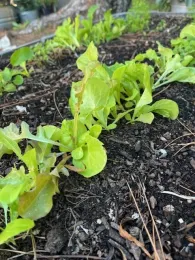
More about Winter Vegetable Gardens
The links below cover basics such as planning your garden including site location, preparing for planting, caring for your vegetable crop, harvesting and storing, and common vegetable garden pests and problems.
UC Master Gardener Program Vegetable Gardening
https://mg.ucanr.edu/Gardening/Vegetable/
References
UC Master Gardener Program Gardening Resources Time of Planting
https://mg.ucanr.edu/Gardening/Vegetable/Preparing/PlantingTime/
UC Master Gardener Program Gardening Resources Fertilizers
https://mg.ucanr.edu/Gardening/Vegetable/Caring/Fertilizing/
UC Cooperative extension of Nevada and Placer Counties Using Organic Amendments
https://ucanr.edu/sites/placernevadasmallfarms/files/142585.pdf
UC The California Garden Web
https://cagardenweb.ucanr.edu/Vegetables/

Photos by Anne Schellman, UC Master Gardener Coordinator.

